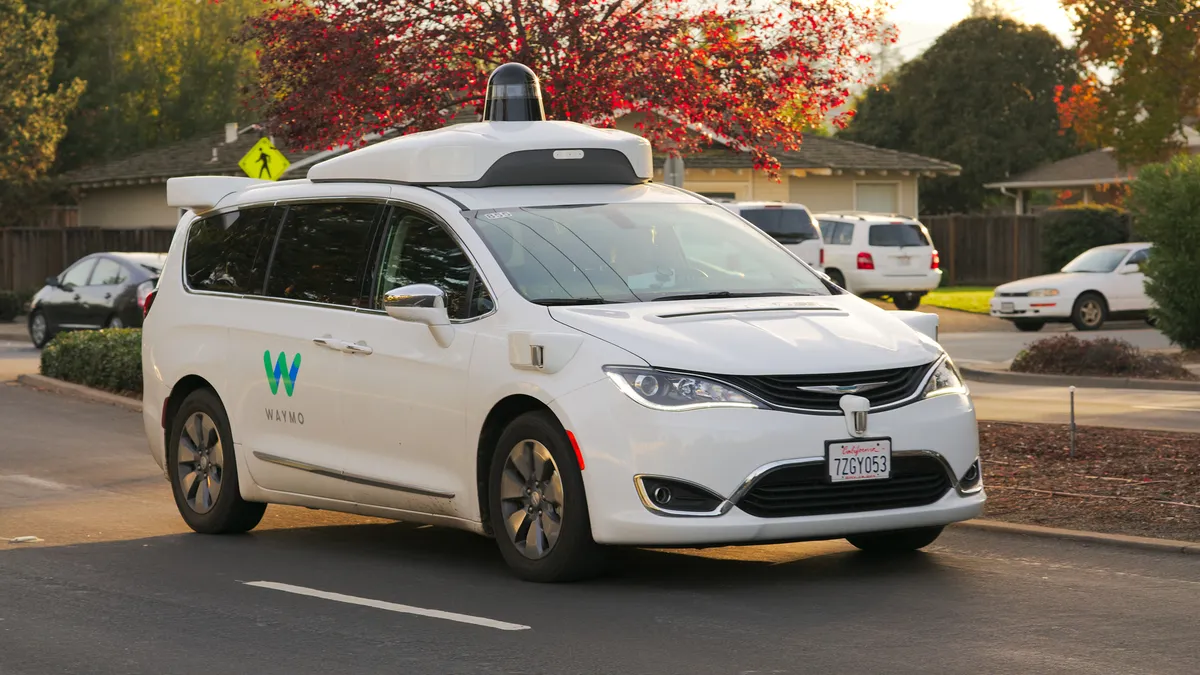Dive Brief:
- The City of Chandler, AZ has rolled out what it says are the nation’s first dedicated pick-up and drop-off location guidelines for autonomous vehicles (AVs), as part of its partnership with Waymo’s self-driving ride-hailing service.
- Since June, a select group of city employees has had access to Waymo One, which operates in the Phoenix area. The pilot program is measuring the efficiency of the service and is set to expand to more employees in the new year.
- Through the partnership, Chandler has opened an AV pick-up and drop-off spot in front of City Hall. The city hopes to encourage businesses and developers to incorporate similar features that will increase AV use and minimize the land dedicated to traditional parking.
Dive Insight:
Since Waymo zeroed in on Arizona for the launch of its ride-hailing service, Chandler has been an eager supporter. The Phoenix suburb is home to the company's service center and encouraged early testing on city roads since 2017, including outreach to the police department to craft rules for the AVs. Giving city employees access to the cars for official business has also been a productivity boon, since employees can work during their trips, said Economic Development Director Micah Miranda.
"We're a community of innovation. Our residents are early adopters of technology and there’s an expectation that Chandler will push the envelope in terms of what services are available," Miranda said in an interview. "We're looking at this as an economic development tool."
Chandler also made waves last spring when it passed a new zoning code specifically with AVs in mind. Developers can reduce parking requirements by up to 40% if they build pick-up and drop-off locations for ride-hailing services, including self-driving services like Waymo One. The idea is to not just turn over land to density, but also model behavior that doesn't rely on single-occupancy vehicles. Cities like Houston, Seattle and Cincinnati have also re-evaluated parking requirements in the light of new mobility options.
The City Hall zone was designed to show how best to create those zones for AVs, with slightly longer and wider stalls for vehicles, Miranda said. Overall, he added, it makes the entire ride-hailing experience easier and more predictable and shows why Chandler is so invested in an AV future.
"Our city is 80% of the way built out, and we want our land used in the most economically advantageous way possible," Miranda said. "This helps encourage developers to plan ahead and think about how technology and new services are impacting the need for parking."











